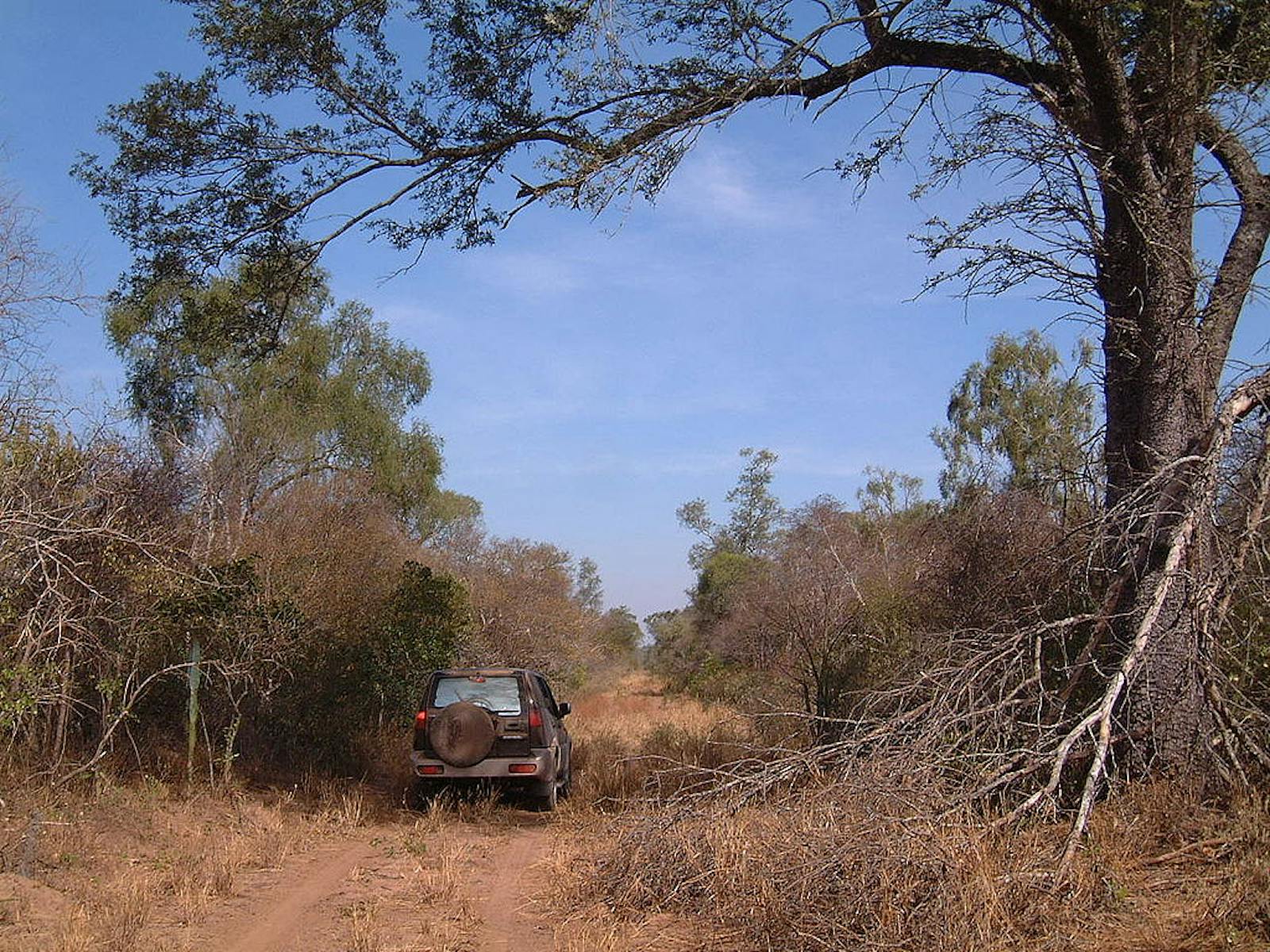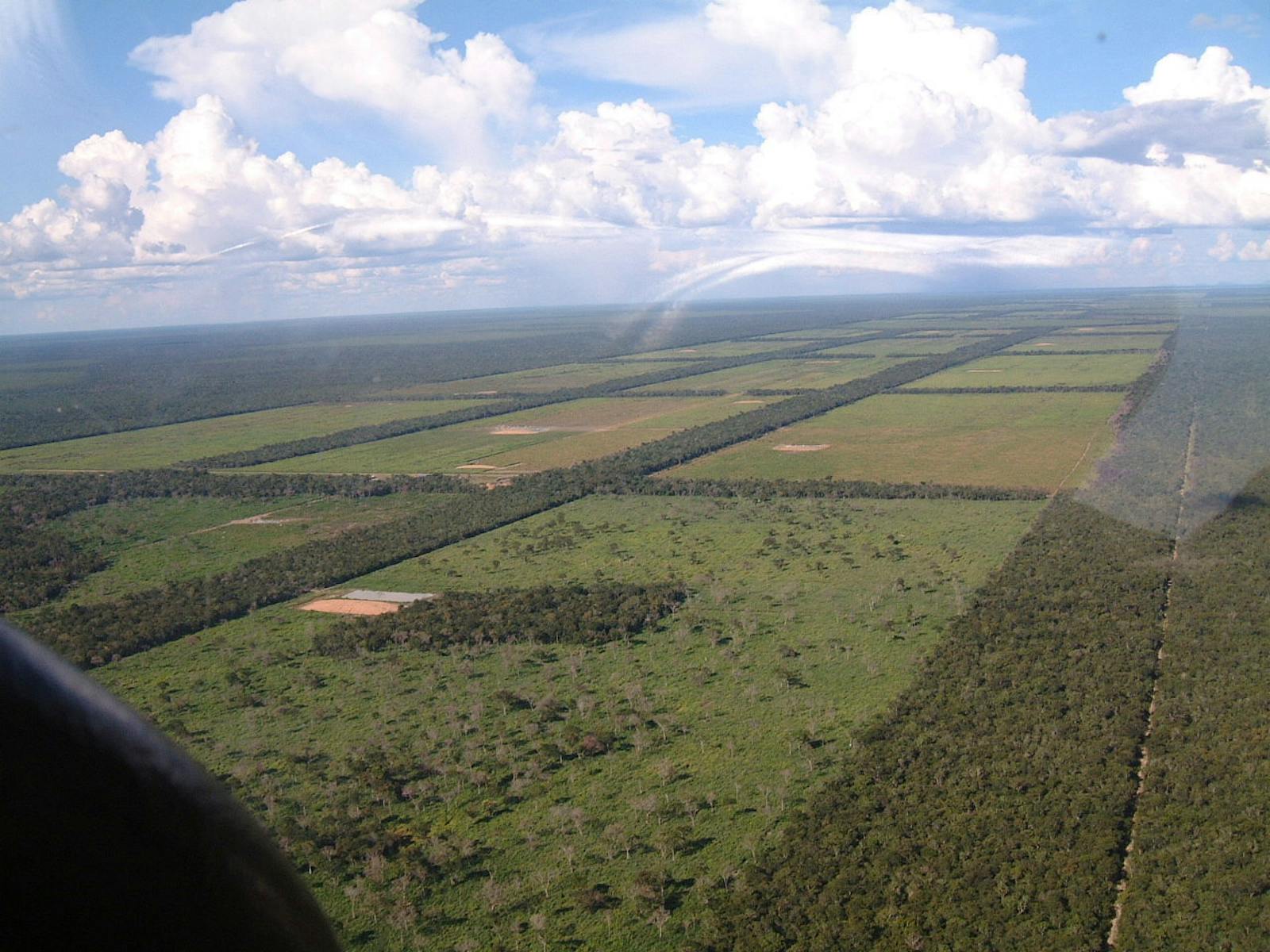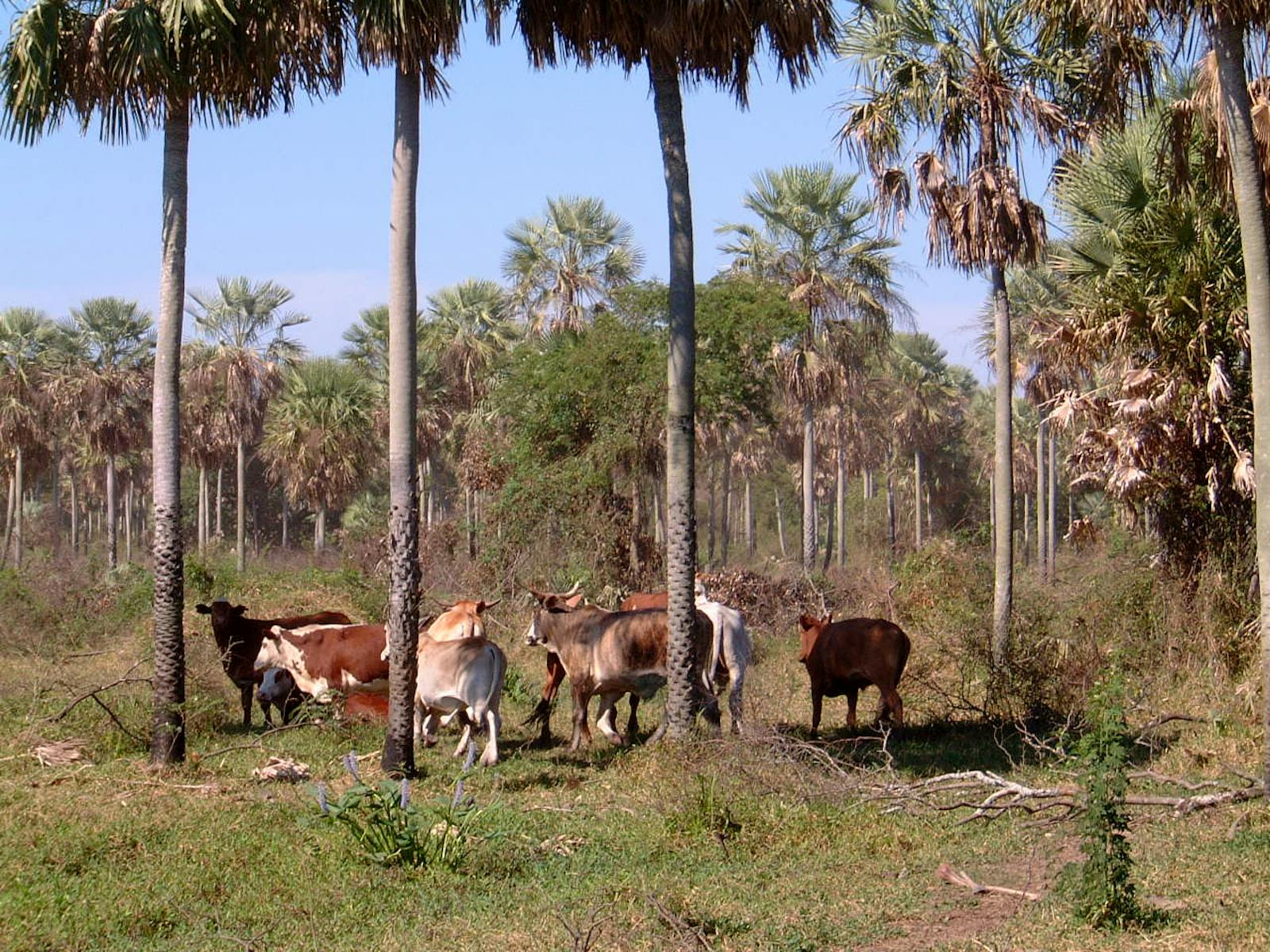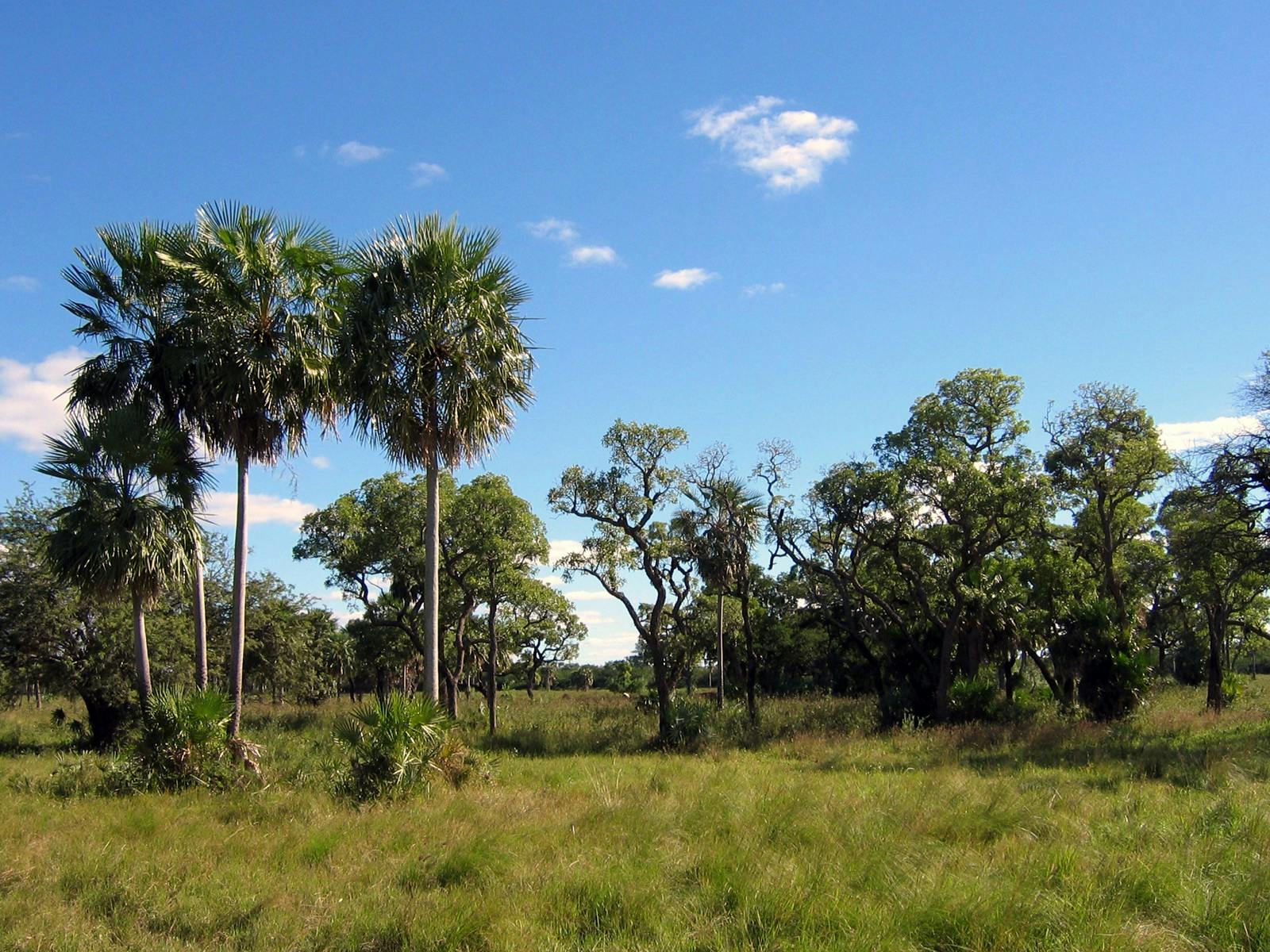Dry Chaco
The ecoregion’s land area is provided in units of 1,000 hectares. The conservation target is the Global Safety Net (GSN1) area for the given ecoregion. The protection level indicates the percentage of the GSN goal that is currently protected on a scale of 0-10. N/A means data is not available at this time.
Bioregion: Chaco Grasslands (NT4)
Realm: Southern America
Ecoregion Size (1000 ha):
79,016
Ecoregion ID:
569
Conservation Target:
52%
Protection Level:
3
States: Argentina, Paraguay, Bolivia
The Chacoan peccary is restricted to the driest parts of the Dry Chaco ecoregion, preferring the thorn forest vegetation. In 1931 the Chacoan peccary’s fossils were discovered and they were thought to belong to an extinct species. It was not until the 1970s that live species were recorded.
Their herd sizes vary between 1–9 individuals and they are sensitive to human habitat alteration. The fact that they have been seen so infrequently attests to their avoidance of humans and converted landscapes. As the southern Chaco is developed and suffers habitat loss the Chacoan peccary’s population had declined and is now listed as endangered.
.jpg)
The flagship species of the Dry Chaco ecoregion is the Chacoan peccary. Image credit: Creative Commons
The Dry Chaco ecoregion is generally restricted to the northwestern two-thirds of western Paraguay, and east of the Andes in southeastern Bolivia and northwestern Argentina. Most scientists agree that the Chaco formed during Pleistocene postglacial fluctuations, from an arid to humid to semiarid environment. The annual temperature and rainfall are around 26°C and 865 mm. The Chaco is comprised of several habitats, although savannah and thorn forests—or a transition of these two—predominate. Savannah habitats are characterized by an abundance of grasses.
A transitional area of Quebracho (hardwood) woodland is more open than the thorn forests, and is characterized by shrubs, prickly pear cacti, thornbush, white hardwood tree, and the conservation dependent Bulnesia sarmientoi tree. The thick thorn forests are often impenetrable with an understory of bayonet bromeliads and star cactus.
The Guarani Indians initially described this region as "Gran Chaco", which implies productive hunting grounds. Their traditional subsistence hunting practices ensured there is still a strong diversity and community of animals in the ecoregion to this day.
The ecoregion has largely been poorly documented by scientists, until recent years. With the relatively recent discovery of the Chacoan peccary, more and more fieldwork is being undertaken by international scientific community to document other unique species to the region. Other mammals include 10 species of armadillo, as well as the Chacoan mara and Conover's tuco-tuco (both rodents).
Reptiles and amphibians of interest include yacare caiman, southern boa, false water cobra, horned frog, and Argentine walking frog. Due to its central location in South America, the Dry Chaco ecoregion hosts a variety of birds, with notables including greater rhea, brushland tinamou, Chaco chachalaca, black-legged serieman, Chaco blue-fronted amazon, picui ground dove, guira cuckoo, little thornbird, and many-colored Chaco finch.
National Parks exist in the northern (Defensores del Chaco) and western sections of the Paraguayan Chaco, as do several private reserves, including one each in the central (Estancia Boquerón'í) and northwestern (Estancia de South American) Paraguayan Chaco.
Argentina also has protected areas in the Chaco, primarily in the northern Argentine Chaco with the National parks Pilcomayo, Baritú, Callilegua, El Rey; Agua Dulce Protected Reserve, Potreros de Yala, and El Bagual; and private reserves in the central (Los Palmares and Copo) and one in the southern region. Reserves in the eastern Paraguayan Chaco and western Bolivian Chaco are noticeably lacking, and reserves in the central and southern Argentinean Chaco are scant.
Much of the Chaco is in various stages of alteration due to grazing of cattle and, in the southern region, goats. Paved road development projects provide easy access to remote sites to hunt game and alter pristine wilderness for agrarian development. A good example of this is the Trans-Chaco highway, completed in the 1990s, connecting Paraguay and Bolivia. Development is most extensive in the southern Argentine Chaco.
The priority conservation actions for the next decade will be to: 1) increase the number of protected areas in the southern Chaco and ensure they are properly staffed; 2) create a series of corridors connecting the protected areas; and 3) encourage sustainable development and ranching methods.
Citations
1. Brooks, D. 2019. Southern South America: Bolivia, Paraguay, and Argentina https://www.worldwildlife.org/ecoregions/nt0210 Accessed June 27, 2019.
2. Lopez, J., E. L. Little, Jr., J. S. Rombold, and W. J. Hahn. 1987. Arboles comunes del Paraguay. Washington, D.C., U.S.A.: Peace Corps.
3. Brooks, D.M. 2000b. New distributional records for birds in the Paraguayan Chaco. Cotinga 13: 77-78.
4. Altrichter, M., Taber, A., Noss, A., Maffei, L. & Campos, J. 2015. Catagonus wagneri. The IUCN Red List of Threatened Species 2015: e.T4015A72587993. Accessed June 27, 2019.






